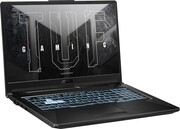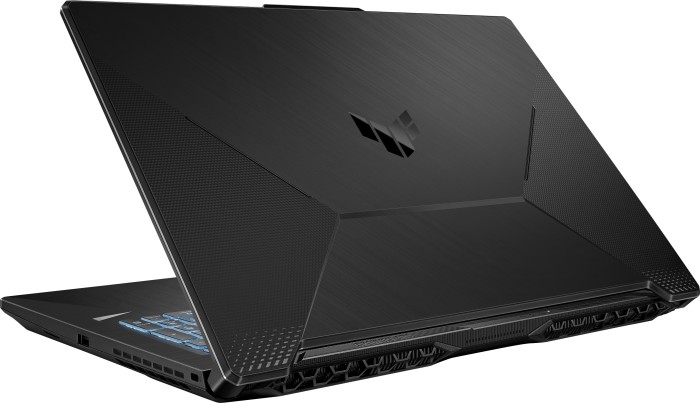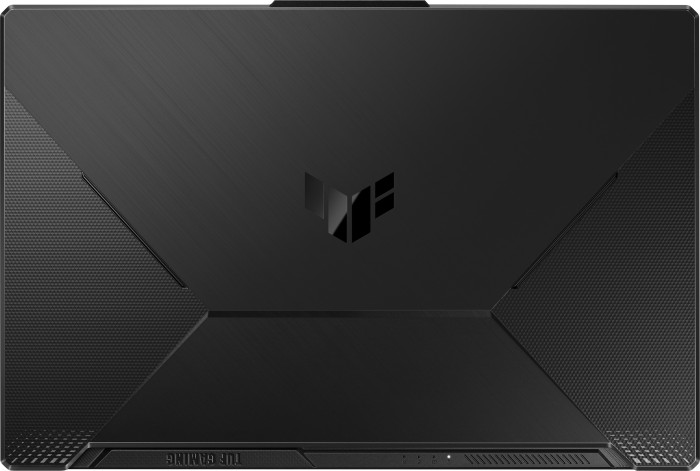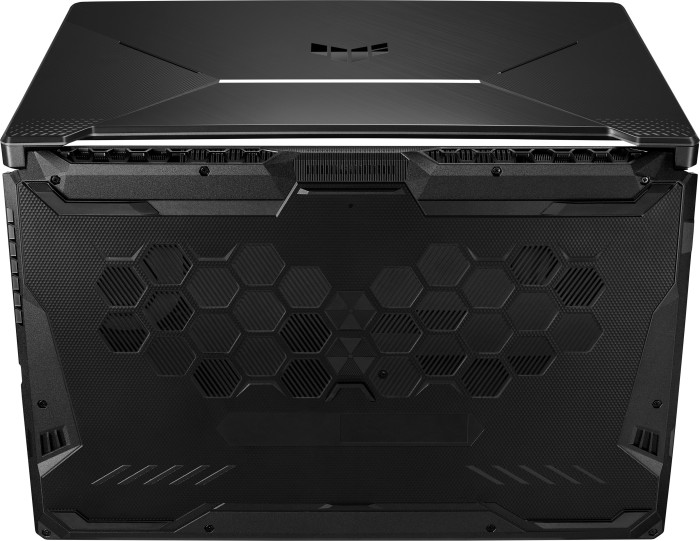Asus TUF Gaming F17 FX706LI-HX177T
Especificaciones de Portátil(es)

Price comparison
Análisis para el Asus TUF Gaming F17 FX706LI-HX177T
Origen: Laptop Media
 EN→ES Archive.org version
EN→ES Archive.org versionYes, this device does well, what it’s intended to do. It brings AAA gaming on a budget. Albeit it’s not able to handle the latest titles at their maximum visual settings, most people will be satisfied by the performance it offers. On the other hand, some things were sacrificed. Usually, the first thing to be compromised is the build quality, but here, we feel this wasn’t the case. Despite the fact that ASUS uses plastic for the majority of this build, the notebook is pretty strong and doesn’t feel cheap. However, the battery life is mediocre. If you get the device with the 48Wh unit, it will last for no more than 6 hours of Web browsing, and a bit over 4 hours of video playback. This figure will be a lot smaller if you multitask or add an intensive workload. ASUS TUF Gaming F17 (FX706)’s 144Hz IPS panel (AUO B173HAN04.9) has a Full HD resolution, comfortable viewing angles, and a good contrast ratio. Thankfully, it doesn’t flicker at any brightness level.
Único Análisis, disponible online, Muy largo, Fecha: 05/31/2021
Origen: Laptop Media
 Archive.org version
Archive.org versionÚnico Análisis, disponible online, corto, Fecha: 05/31/2021
Comentario
NVIDIA GeForce GTX 1650 Ti Mobile:
Tarjeta gráfica dedicada de gama media para portátiles que utiliza un chip Turing TU117 sin trazado de rayos y núcleos Tensor. Debería ser ligeramente más rápida que una GTX 1650, pero también está disponible en diferentes variantes con un TGP que va de 55 a 80 vatios (y dos paquetes).
Estas tarjetas también deben ser capaces de aguantar todos los juegos actuales, pero la mayoría de ellos en configuraciones de detalles medios y bajos y con bajas resoluciones. Juegos más antiguos, o menos exigentes todavía pueden ser jugados con buena calidad de gráficos.
>> Más información puede ser encontrada en nuestra comparación de tarjetas gráficas moviles y la lista de benchmarks.
i7-10870H:
En la arquitectura de Coffee Lake, un procesador para portátiles grandes y pesados. Integra ocho núcleos de procesador registrados a 2,2 - 5 GHz (los 8 núcleos hasta 4,2 GHz) que soportan HyperThreading. Fabricado en un proceso mejorado de 14nm (14nm++).
>> Más información puede ser encontrada en nuestra comparación de procesadores móviles.







